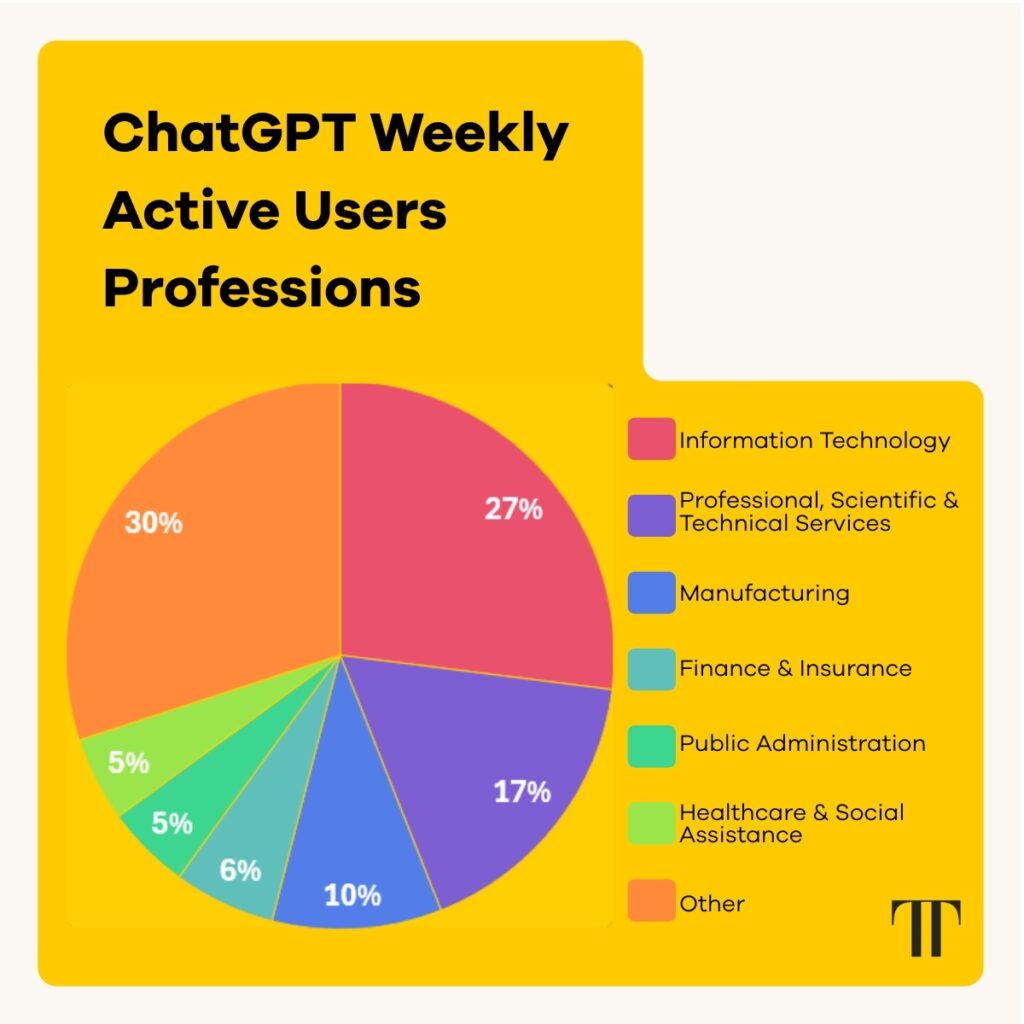
How are people using AI for work?
OpenAI recently published a study using first-party data, showcasing AI adoption and usage of ChatGPT. Here we’ve broken down the TLDR, as well as our own thoughts on what this could mean for changes in the search behaviour of key decision makers.
Quick summary
- LLM usage is growing among workers particularly in the Information Technology industries
- One of the main uses of ChatGPT in the workplace is research
- With the rise of Agent Mode, appearing in AI results is paramount to Organic Search strategies
- Check out our AI crawlability checklist at the end
Are people using ChatGPT for work?
According to the OpenAI study, over a quarter of workers in the US are using ChatGPT for work. While this is an American study, we can safely assume that employees in the UK are fast following suit. This comes as no surprise when thinking about how the tool can be used for research, to brainstorm ideas and to summarise data among many other efficiencies.
Who is using ChatGPT in the workplace?
According to OpenAi’s recent study, increasing numbers of the public are using ChatGPT as gender gaps decrease and accessibility improves. The tool is now accessible globally, and has seen that adoption growth rates in low-income countries were far greater than that of the countries with the highest incomes.
OpenAI also claims that there is a correlation between ChatGPT usage and education, where almost half of workers with graduate degrees use the tool for work.
Which industries are adopting ChatGPT?
OpenAI’s research shows that the industry that uses ChatGPT the most is IT, making up 27% of weekly active tool users, followed by Professional, scientific and technical services (which includes accounting and legal services) at 17%. Manufacturing comes in at third with 10% share of business weekly active users. 6% of ChatGPT weekly active users work in Finance & Insurance.
Workers in IT and Finance use the tool for information-heavy work whereas manufacturers use it for things like process automation and supply chain optimisation.
OpenAI were able to ascertain this information by mapping user email domains to industries, where work email addresses are used.
How are people using ChatGPT for work?
Unsurprisingly, people working in IT and Finance are showing the highest levels of AI adoption given their propensity to use tech. In these industries, research is within the top 3 technical uses of the tool.
With this we can infer that there is a high likelihood that key decision-makers are also using AI for their own research, which means brands targeting these audiences need to be visible within AI search results.
OpenAI claims that go-to-market teams use ChatGPT for writing, research and media generation.

How will decision-makers’ use of AI evolve?
In the near future, we expect that workers and key decision makers will use Agent Mode for complex research and planning tasks. Agent Mode is where an AI bot crawls content on the web to retrieve information and produce in-depth research, including all sources.
For both B2C and B2B brands, it will become crucial to be visible in these types of AI searches to be considered by desired audiences. Generative Engine Optimisation needs to be a part of their Organic Strategies in order to compete in the rapidly evolving search landscape.
How to ensure your brand appears in LLM search
With LLM search being a relatively new addition to the search journey, the best place to start is through measurement. Understanding where your website performs and which competitors are winning in the space will help to guide your strategy.
Having a comprehensive Organic Search strategy should encompass both traditional Search Engine Optimisation as well as AI search (or GEO).
That being said, here is a quick list of technical checks you can do to ensure your website is able to be crawled by AI bots.
✅ AI crawlability checklist:
- Ensure AI bots are not blocked from crawling your site – in robots.txt or at a server level
- Put all important content in the HTML of the page (not in JS or PDFs)
- Utilise internal linking to ensure your content is discoverable and to add context





